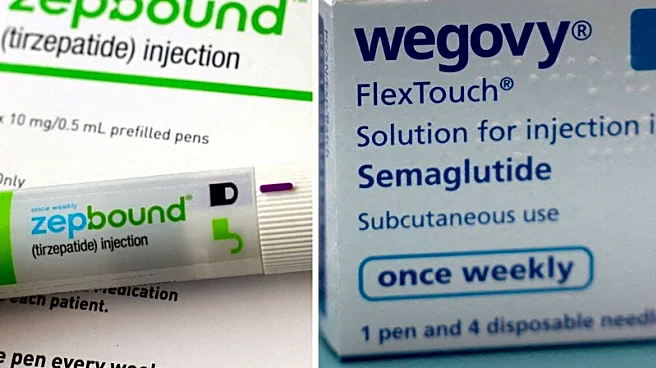What's Happening?
Novo Nordisk has announced a new pricing strategy for its diabetes drug Ozempic, offering it at $499 per month to eligible cash-paying patients in the U.S. This initiative is part of a collaboration with telehealth service GoodRx and other platforms, aiming to expand access to patients without insurance coverage. The move comes amid increased competition from online telehealth companies and pharmacies offering cheaper compounded versions of similar medications. Novo Nordisk's shares rose following this announcement, alongside the recent FDA approval of its weight-loss drug Wegovy for treating a serious liver disease.
Why It's Important?
The pricing strategy for Ozempic reflects broader trends in the pharmaceutical industry, where companies are increasingly exploring direct-to-consumer sales models to improve access to medications. This approach could benefit patients who struggle with high drug costs due to lack of insurance coverage. By offering Ozempic at a reduced price, Novo Nordisk aims to capture a larger share of the market, potentially increasing its competitive edge against rivals like Eli Lilly. The initiative also highlights the growing role of telehealth services in healthcare delivery, which could reshape how patients access and pay for medications.
What's Next?
Novo Nordisk's pricing strategy may prompt other pharmaceutical companies to reconsider their own pricing models, especially in the face of competition from telehealth platforms. The company plans to continue exploring new collaborations to enhance access to its semaglutide medicines. As the market for diabetes and weight-loss drugs evolves, stakeholders will likely monitor the impact of these pricing changes on patient access and overall market dynamics. Additionally, regulatory developments and consumer feedback could influence future pricing strategies.
Beyond the Headlines
The shift towards direct-to-consumer sales raises ethical questions about drug pricing and access to healthcare. While reduced prices can improve access for uninsured patients, they also highlight disparities in healthcare affordability. The collaboration with telehealth services underscores the potential for technology to bridge gaps in healthcare delivery, but it also necessitates careful consideration of data privacy and security. Long-term, these developments could influence policy discussions on healthcare reform and drug pricing regulations.












